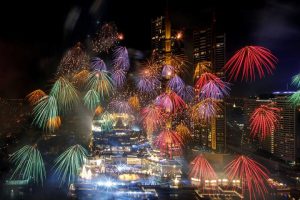Before Real Estate Investment
The tastes of the market ought to be thought-about if you get rent condo in bangkok a residential property. Paint attractively and include some exciting new features in important areas such as kitchen. Renovate it to satisfy the needs of the market. Compare it with what newly constructed residential units have and you may be able to attract tenants within a brief time. Reduce costs and concentrate on such renovations that can supply you higher returns.
In 1993, part of 9th Avenue between 35th and 41st Streets was also rezoned. While most fire stations in Manhattan lost firefighters in the September 11, 2001, terrorist attacks, the station with the greatest loss of firefighters was Engine Co. 54/Ladder Co. 4/Battalion 9 at 48th Street and Eighth Avenue, which lost 15 firefighters. By the early 1990s, there was a recession, which scuttled plans for rezoning and severely reduced the amount of development in the area. After the recession was over, developers invested in areas like Times Square, eastern Hell’s Kitchen, and Chelsea, but mostly skipped the Far West Side. However, neither of these rezonings was particularly significant, as most of the area was still zoned as a manufacturing district with low-rise apartment buildings.
With the opening of the original Improv by Budd Friedman in 1963, the club became a hangout for singers to perform but quickly attracted comedians, as well, turning it into the reigning comedy club of its time. Manhattan Plaza at 43rd Street between Ninth and Tenth Avenues was built in the 1970s to house artists. Once located at 358 West 44th Street and Ninth Avenue, it has since closed. It consists of two 46-story towers with 70% of the apartments set aside for rent discounts for those who work in the arts.
The massive Port Authority Bus Terminal is between 40th and 42nd Streets and Eighth and Ninth Avenues. One railroad line to Penn Station runs through the neighborhood, the Empire Connection, which is located in the sunken West Side Line west of Tenth Avenue. It serves numerous commuter and intercity routes, as well as airport shuttles and tour buses. The piers originally built in 1930 are now considered small, and some cruise traffic uses other locations. Parts of the trench have been covered over. Located just southeast of Hell’s Kitchen is Penn Station.
By the 2010s, the neighborhood had become home to young Wall Street financiers. Hispanic or Latino of any race were 19.3% (8,877) of the population. The entirety of Community District 4, which comprises Hell’s Kitchen and Chelsea, had 122,119 inhabitants as of NYC Health’s 2018 Community Health Profile, with an average life expectancy of 83.1 years. 2,20 This is higher than the median life expectancy of 81.2 for all New York City neighborhoods. The racial makeup of the neighborhood was 56.4% (25,891) White, 6.3% (2,869) African American, 0.2% (70) Native American, 15.0% (6,886) Asian, 0.1% (31) Pacific Islander, 0.4% (181) from other races, and 2.4% (1,079) from two or more races.
The northern edge of Hell’s Kitchen borders the southern edge of the Upper West Side, though the section west of Ninth Avenue and south of 57th Street is also part of the Columbus Circle neighborhood. 57th Street was traditionally the boundary between the Upper West Side and Hell’s Kitchen, but another interpretation puts the northern border at 59th Street, where the names of the north-south avenues change. Included between 57th and 59th Streets the Time Warner Center at Columbus Circle; Hudson Hotel; Mount Sinai West, where John Lennon died in 1980 after being shot; and John Jay College.


